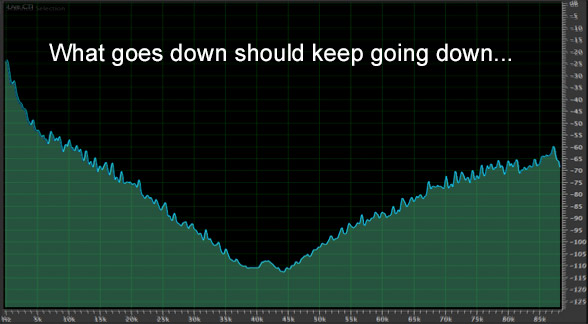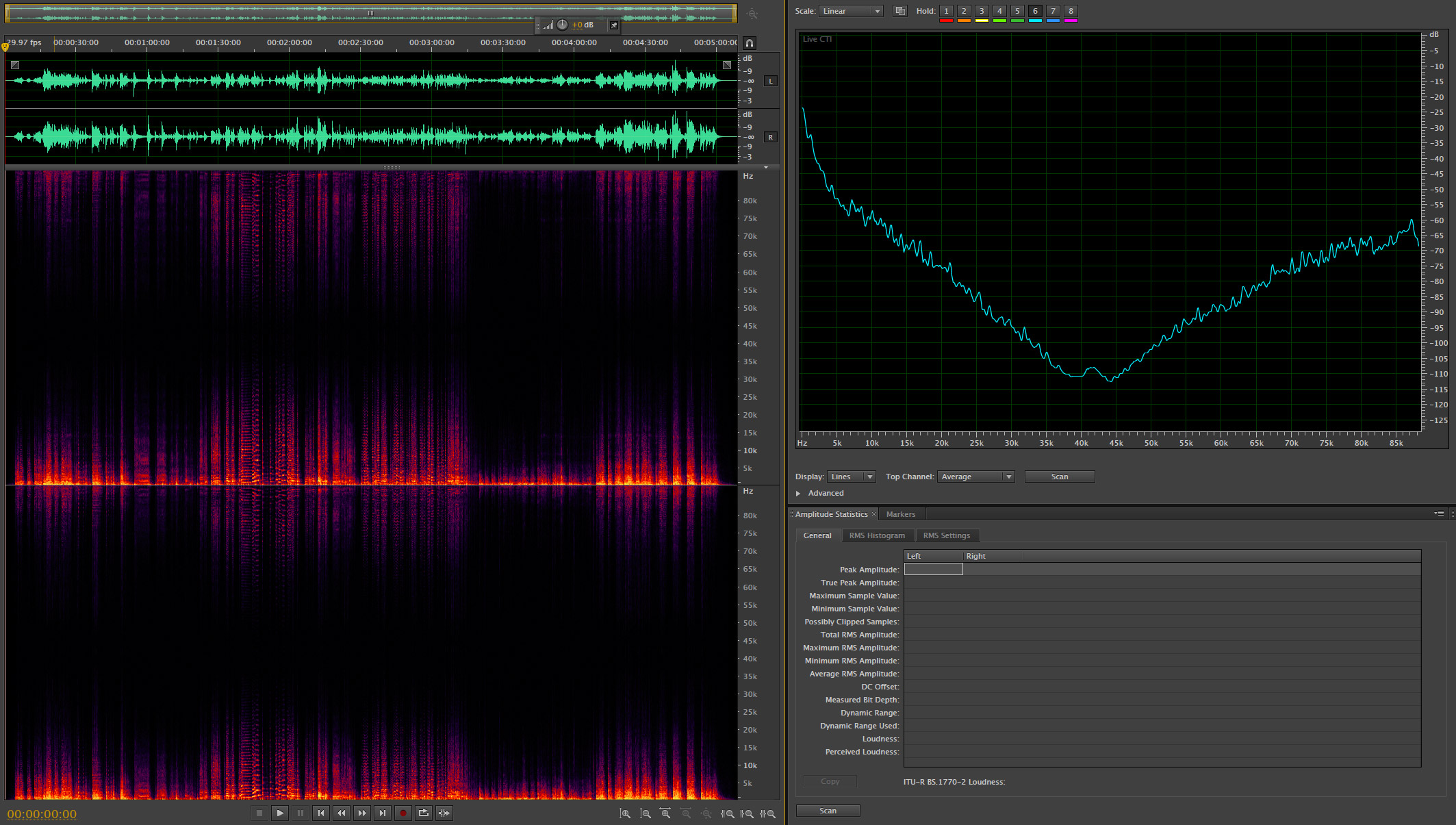Chasing Butterflys
Lately, I’ve been exploring the new and improved tools in Adobe’s CS6 version of Audition, which is an audio editing and analysis tool found in the latest version of the creative suite. I talked about spectragraphs earlier but would like to revisit the topic because I discovered some very troubling plots after loading some “Hi Resolution WAV files” from a DVD-ROM disc I acquired at the recent New York Audio Show.
Here’s the full spectragraph that I saw using the Audition tool (you can click on the image for a full sized version).
A spectragraph of a recent “hi resolution WAV file” sold on a DVD-ROM as a bona fide HD-Audio file.
The mirrored spectra displays an acoustically impossible array of frequencies loud at the lower frequencies as we would expect, but somehow there’s equally loud frequency components at the extreme high end diminishing in amplitude as they get lower. I’ve seen this before and Keith Howard of HiFi News in the UK has written about this phenomenon in an article called “Download Debacle” from a year of so ago.
Essentially, if you see a spectragraph that exhibits a “butterfly” type graph, you’re looking at a file that has been bit doubled. That means that the file started at a lower sample rate and was manipulated by an engineer somewhere to make it read as a higher resolution file. For those of us trying to elevate the sound of music recordings AND establish a meaningful definition of just what a high definition recording is, this type of manipulation is very bad news and downright dishonest.\
As I said, it’s not the first time that it has happened. Keith Howard’s article discovered a number of files downloaded from some of the largest HD digital music sites that were altered in this fashion. Making a standard definition track into an “HD track”, is not really that hard to do. If a particular track started its life on analog tape and then transferred to a PCM digital file, it will only have the specifications and fidelity of the original analog master…not the enhanced specifications and sound of a real HD-Audio file. So why do some sites charge a premium for a 176.4 kHz version of an analog master over the 88.2 kHz version when there is not difference? Who knows…the only reason I can think of is that there’s audiophiles that believe it’s worth the extra charge.
I don’t really know what to make of the recordings that I received at the show and are sold for $50 as hi resolution files. They will not benefit from undergoing this manipulation so why bother? I guess it comes down to the biggest number marketing strategy that seems so prevalent in today’s world. As usual, it’s buy beware.



I remember when I was 16, I thought I was an audiophile. I swore vinyl was the best medium for audio delivery, and I constantly searched ebay and craigslist for reel-to-reel machines. I was simply uneducated on the subject. Seems like lots of “audiophiles” just don’t know anything about HD audio!
Vinyl can be great, but it’s only one flavor among many formats for delivering great quality audio.